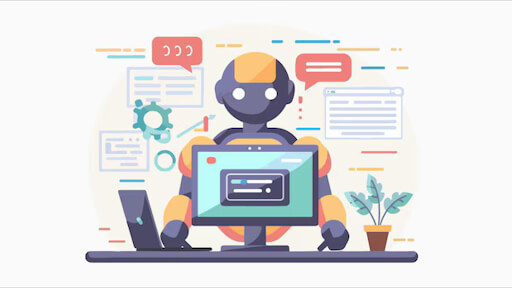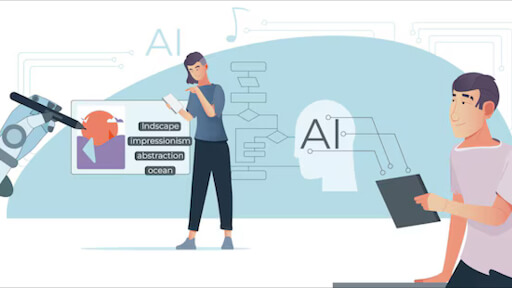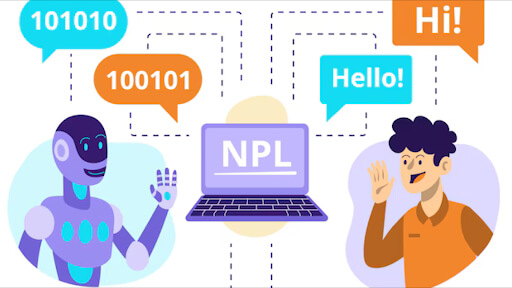 1-800-805-5783
1-800-805-5783 
In today’s interconnected world, speaking more than one language is like having a superpower. It opens doors, connects cultures, and makes you more attractive. But what if you could communicate seamlessly in any language, even if you don’t know it? That’s where cross-lingual AI models and multilingual AI models come in.
This diversity underscores the urgent need for cross-lingual AI models and multilingual generative AI models that can bridge communication gaps across languages. This need is becoming more pressing with each passing day.
Imagine a world where language isn’t a barrier. With these powerful AI models, you can translate text, generate content in multiple languages, and even have conversations with people from all over the globe. It’s like having a personal translator and writer at your fingertips!
But how does it work? These cross-lingual AI models are trained from different languages using vast textual data. They learn each language’s patterns, rules, and nuances, allowing them to understand and generate text naturally and fluently.
The number of web pages in multiple languages has steadily grown with globalization, international trade, and increasing social media.
Think about it like this: These models are like language superheroes, capable of:
Recent advancements in neural machine translation have significantly enhanced the accuracy and fluency of machine-translated text. GPT-3-like AI models have been impressive in multilingual text generation from quality in many languages- including poetry, code, and scripts.
Given how quickly AI is developing, the potential of these models is limitless. AI-powered tools that accurately translate text and generate creative content in multiple languages are now available.

Cross-lingual AI models and multilingual NLP tasks face challenges because of the intrinsic diversity and complexity of the languages. Research from Google shows that some linguistic features are more general than others; for example, word order and negation are used.
Language Complexity and Diversity
Structural differences: All languages have very different grammatical structures and syntax, with differences in semantics, which makes generalizing models to different linguistic families hard.
Morphological differences: The complexity of the morphological systems is a root difference with considerable depth in inflection and derivation, making it hard to represent and process the words appropriately.
Semantic differences: Though closely related languages may not differ significantly in meaning and nuance, minute differences may still exist in the deep nuances involved in cross-lingual AI model communication.
Such challenges require further development on cross-lingual AI models and multilingual NLP models that are more robust and adaptable. It is also necessary to work on parallel corpora, which are larger in size and higher in quality.
Cross-lingual AI models and multilingual generative AI models have attracted significant attention due to their capability to process and generate text in multiple languages.
Translating the three applications mentioned above, namely machine translation, text summarization, and question answering, requires attention to various techniques in building these models. Below are some of the prominent methods used for the construction of the models:
Translation-Based Approaches
1. Statistical Machine Translation (SMT): In SMT models, statistical techniques are used to translate a piece of text in one language into another. This requires large parallel corpora to know which statistical relationship exists between words and phrases in other languages.
2. Neural Machine Translation (NMT): NMT models utilize neural networks to learn this mapping directly between source and target languages. NMT models have significantly improved and provide much better results than SMT models.
Parallel Data-Based Approaches
1. Contrastive Learning: Contrastive learning methods aim to learn invariant representations across different-meaning sentences regardless of the language in which they are written. This helps capture the cross-lingual AI model’s semantic relationships.
2. Multilingual Representation Learning: Multilingual representation learning techniques learn shared representations across multiple languages so that models can translate knowledge between languages.
Transfer Learning Approaches
1. Multilingual Pretraining: Training models on large multilingual corpora would help them learn general language representations, which could be fine-tuned for specific tasks in different languages.
2. Zero-Shot and Few-Shot Learning: Zero-shot learning allows models to perform tasks in languages they have never witnessed at training time, while few-shot learning allows them to perform tasks with limited training data.

1. Machine Translation: Cross-lingual AI models and multilingual generative AI models that convert text between different languages in several languages can improve interaction and information exchange.
2. Text Summarization: These models absorb vast volumes of information by summarizing material in different languages.
3. Question Answering: Cross-linguistic and multilingual question-answering systems help users find information in other languages.
4. Sentiment Analysis: These models’ sentiments in the text would enable businesses to understand customer feedback and opinions.
5. Content Generation: Generative AI models can generate creative content, such as poems, stories, and code in multiple languages.
These techniques and applications will cure the traditional linguistic barriers that hinder global communication and collaboration.

Research on multilingual pre-training models in recent years has shown tremendous growth in empowering AI systems to read and write in many languages. Such models can be trained on vast datasets of text written in different languages and, during training, acquire intricate patterns and relationships between words and ideas.
Multilingual pre-training has performed about 20% better than their monolingual counterparts in a wide range of low-resource languages.
But with great power comes great responsibility. We must be careful when developing and using these AI systems. They can be accommodating, but they can also be biased or harmful if not used responsibly.
Here’s what we need to do:
Ethical Considerations in Cross-lingual and Multilingual AI
As cross-lingual AI models and multilingual AI systems mature technologically, their development and deployment require ethical considerations. These systems would dramatically alter society, so they must be appropriately developed and used.
A multi-faceted approach can best address the challenge of bias and fairness in multilingual AI systems. This includes:
Diverse training data: Training data for developing multilingual AI programs must be varied and inclusive to the intended audience.
Bias detection and mitigation: Develop techniques to detect and mitigate biases in AI systems. Researchers have developed methods to detect biases in AI systems, such as fairness metrics and adversarial training. Organizations and collaboration groups, like the Partnership on AI, have also constructed ethical guidelines for developing and deploying AI.
Ethical guidelines: Establish ethical guidelines for developing and deploying multilingual AI systems. With these ethical considerations and responsible practice, we can ultimately obtain cross-lingual and multilingual AI systems that benefit society and not vice versa.
By doing these things, we can create a future in which language barriers are a thing of the past—where people can connect, collaborate, and learn from each other more efficiently than ever.

These new cross-lingual AI models and multilingual generative AI models are transforming how we view language barriers in technology. Such complex models can understand and generate content in different languages, allowing more inclusive communication, globalized business opportunities, and diverse digital experiences.
These technologies’ implications for various industries, such as education, healthcare, and customer services, are unprecedented in their ability to employ the model’s multilingual capabilities to reach a broader audience.
In other words, further developing robust cross-lingual AI models as above lets us create a world not confined by its language but rather bridged by innovation and accessibility across the globe.
1. What are cross-lingual AI models?
Cross-lingual AI models are designed to process and understand text in multiple languages, enabling seamless translation, communication, and content generation across different languages.
2. How do multilingual generative AI models work?
Multilingual generative AI models are trained on diverse language datasets. They can generate human-like text in multiple languages, ensuring content creation is not limited to just one language.
3. What are the benefits of using cross-lingual AI models?
These models break down language barriers, allowing businesses to reach global audiences, improve multilingual customer support, and foster inclusive communication.
4. Can multilingual generative AI models be customized for specific languages?
Many multilingual AI models can be fine-tuned or adapted to prioritize specific languages or dialects, depending on the user’s needs.
5. Which industries benefit most from cross-lingual and multilingual AI?
Industries like education, healthcare, customer service, and global commerce benefit significantly from these models, as they help to provide accessible and efficient multilingual communication.
[x]cube has been AI-native from the beginning, and we’ve been working with various versions of AI tech for over a decade. For instance, we’ve been working with Bert and GPT’s developer interface even before the public release of ChatGPT.
One of our initiatives has significantly improved the OCR scan rate for a complex extraction project. We’ve also been using Gen AI for projects ranging from object recognition to prediction improvement and chat-based interfaces.
Are you interested in transforming your business with generative AI? Schedule a FREE consultation with our experts today!